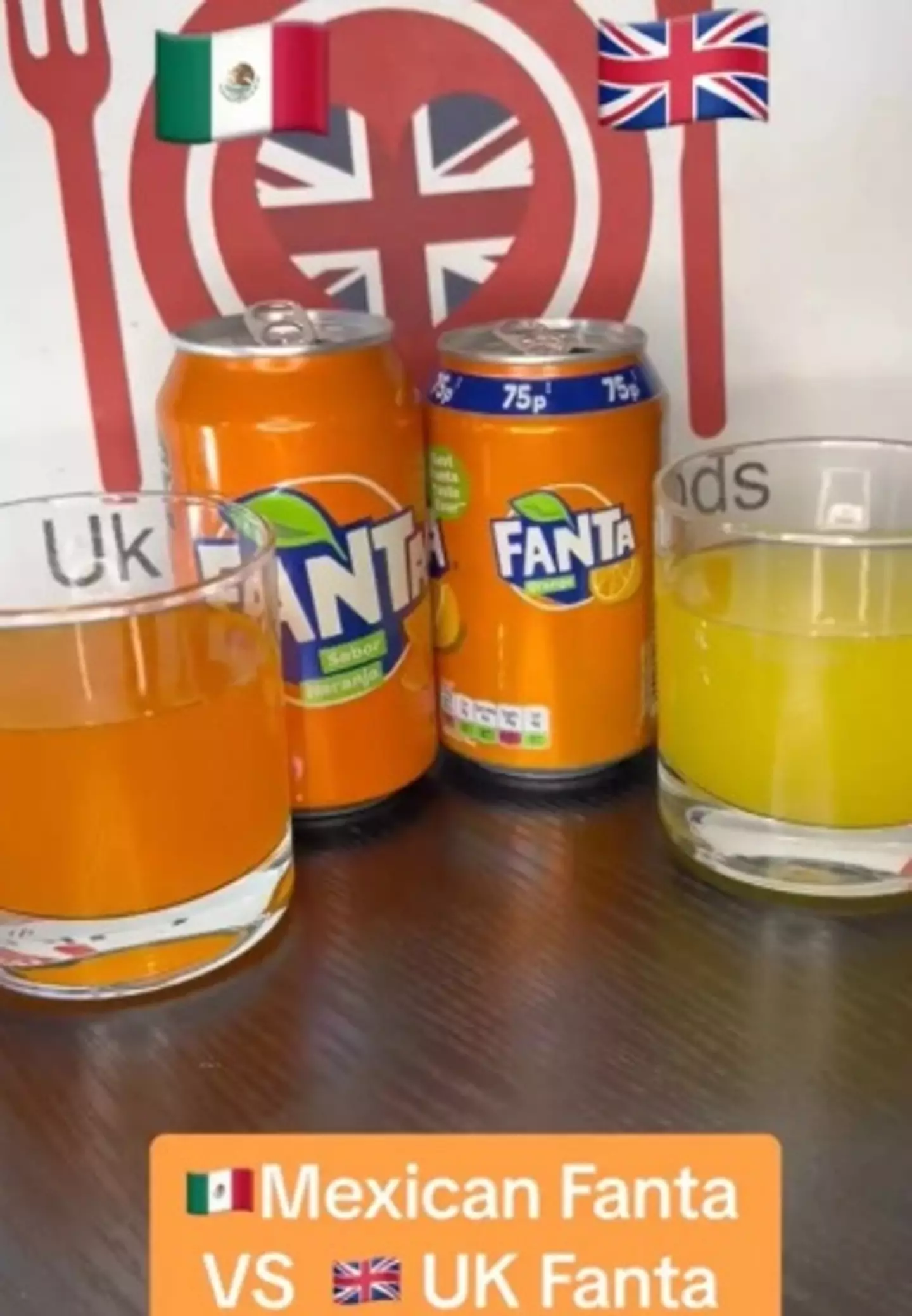
Sometimes, the ‘same but different’ sensation abroad can leave you feeling let down when you get home.
It’s hard to imagine someone lamenting the fact they can’t get a bag of Lays when they’ve got Walkers crisps at the local Londis, but it’s more or less a universal truth that foreign Fanta looks and tastes better than the orange fizz we get in the UK.
Even those of us who’ve stay-cationed this year have had to contend with that frustrating fact thanks to a social media user who posted comparison pictures between Fanta Orange from Mexico and the same product available in Britain.
He said his own comparison triggered the ‘worst possible holiday blues’, and that drinking the UK’s Fanta Orange upon his return had been a ‘proper fall from grace’.
Advert

The pictures laid bare the visual difference, at least, which is pretty stark. The Mexican Fanta is a much deeper orange than the British equivalent, which looks much more diluted.
"Ours is sh*t," lamented one reply.
"That proper orange Fanta hits different, it’s unbelievable," agreed another.
Advert
"Fanta abroad is insane, makes UK Fanta look anaemic," commented another, while yet another user shared: "The orange Fanta tastes WAY better than our UK version! I brought 4 x 2 litre bottles of it back with me from New Zealand, its way more refreshing. I wish we got it here."
So, why are we being deprived of the spice melange that is non-UK Fanta?
In an unsexy turn of events, it’s about food regulations.
The UK’s sugar tax, for example, puts a premium on high-sugar beverages that manufacturer Coca-Cola has been unwilling to foist upon customers. Since 2017, this tax has seen the UK’s Fanta Orange lose some of its sugar content, dropping from 5g per 100ml to 4.5g.
Advert
Other countries have their own sugar content rules, explaining why there’s a disparity in how these branded fizzy drinks go down elsewhere.
Spain and Portugal’s Fanta has similar sugar content to the UK version, but in Italy the Fanta Orange has a whopping 11.8g per 100ml. Greece comes in at 8g, while Germany lags a little behind at 7.6g.
At any rate, our Fanta is among the least-sugary in Europe.
The US version uses high fructose corn syrup instead of sugar and doesn’t use any real orange juice.
Advert
Juice content seems to make a big difference, too. Italy’s Fanta Orange has 12% orange juice in its makeup compared with the UK’s 3.7%.
"We produce Fanta Orange across Europe and the juice content may vary in different countries,” said The Coca-Cola Company in a statement.
"Throughout Europe, Fanta Orange is sweetened with either sugar or a combination of sugar and sweeteners. We are constantly working to reduce the sugar content in our drinks.
.jpg)
Advert
"For this reason, you may notice that the content of sugar or sweeteners in the drink varies from country to country. In Germany, for example, we launched Fanta Orange with reduced sugar content without any sweeteners."
It continued: "The basic ingredients and process used to make Coca‑Cola are the same in all countries, although people perceive taste in very different ways.
"It is possible for the same soft drink to vary slightly in taste due to other factors such as the temperature at which it is consumed, the foods with which it is consumed, or the conditions in which it is stored prior to consumption."
